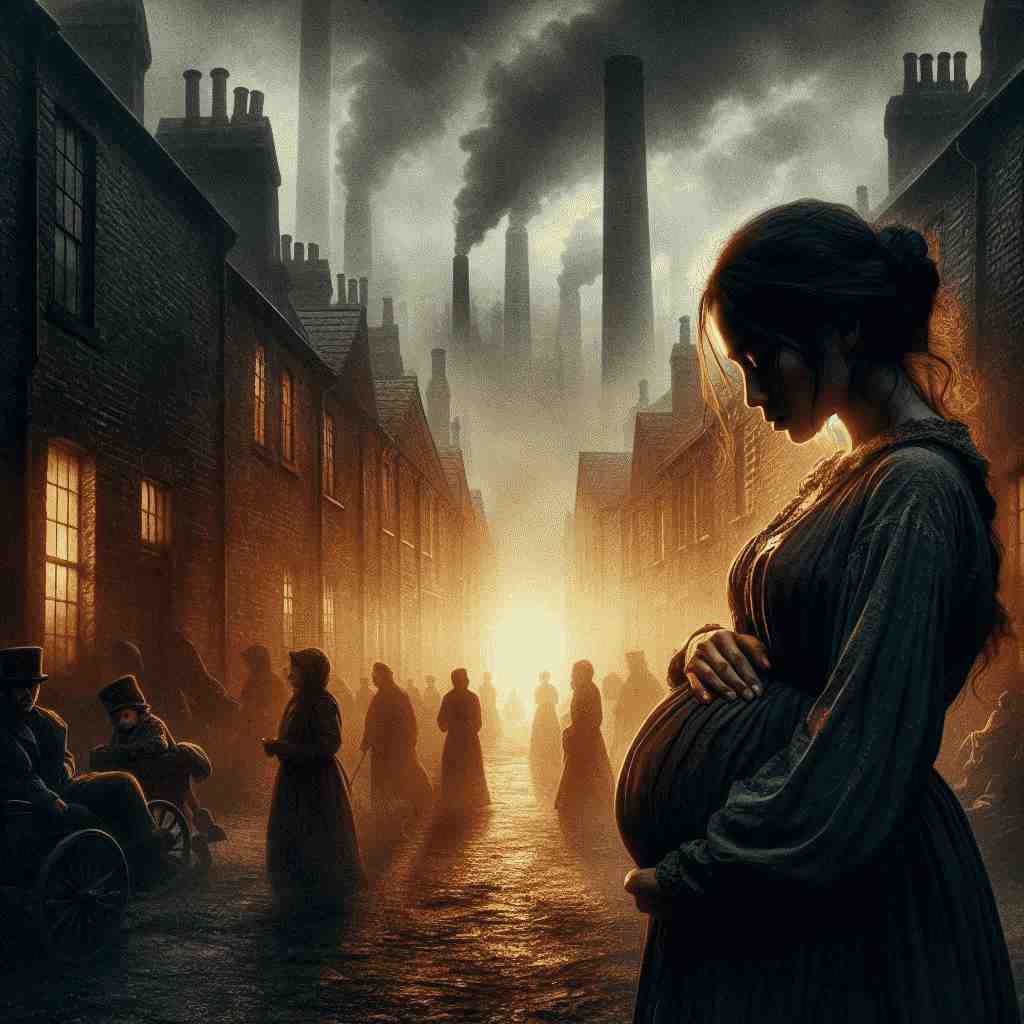To an Unborn Pauper Child
Thomas Hardy
1840 to 1928

Want to track your favorites? Reopen or create a unique username. No personal details are required!
Breathe not, hid Heart: cease silently,
And though thy birth-hour beckons thee,
Sleep the long sleep:
The Doomsters heap
Travails and teens around us here,
And Time-Wraiths turn our songsingings to fear.
Hark, how the peoples surge and sigh,
And laughters fail, and greetings die;
Hopes dwindle; yea,
Faiths waste away,
Affections and enthusiasms numb:
Thou canst not mend these things if thou dost come.
Had I the ear of wombed souls
Ere their terrestrial chart unrolls,
And thou wert free
To cease, or be,
Then would I tell thee all I know,
And put it to thee: Wilt thou take Life so?
Vain vow! No hint of mine may hence
To theeward fly: to thy locked sense
Explain none can
Life's pending plan:
Thou wilt thy ignorant entry make
Though skies spout fire and blood and nations quake.
Fain would I, dear, find some shut plot
Of earth's wide wold for thee, where not
One tear, one qualm,
Should break the calm.
But I am weak as thou and bare;
No man can change the common lot to rare.
Must come and bide. And such are we-
Unreasoning, sanguine, visionary-
That I can hope
Health, love, friends, scope
In full for thee; can dream thou'lt find
Joys seldom yet attained by humankind!
Thomas Hardy's To an Unborn Pauper Child
Thomas Hardy's poem "To an Unborn Pauper Child" presents a haunting meditation on the human condition, exploring themes of suffering, determinism, and the paradoxical nature of hope. Through its six stanzas, Hardy crafts a complex dialogue between the speaker and an unborn child, using this imaginative conceit to probe deep philosophical questions about existence and the value of life.
The poem opens with a striking apostrophe to the "hid Heart," urging the unborn child to resist entering the world. This initial plea sets a somber tone, immediately introducing the speaker's pessimistic worldview. Hardy's use of alliteration in "Breathe not" and "cease silently" creates a hushed, almost conspiratorial atmosphere, as if the speaker is sharing a vital secret. The capitalization of "Doomsters" and "Time-Wraiths" personifies these abstract concepts, lending them a mythic quality and emphasizing their power over human life.
In the second stanza, Hardy paints a bleak picture of the world awaiting the unborn child. The imagery of surging, sighing peoples and failing laughter creates a sense of collective despair. The anaphoric structure of "Hopes dwindle; yea, / Faiths waste away" reinforces this feeling of inexorable decline. By cataloging the erosion of positive human experiences and emotions, Hardy suggests that life is a process of gradual disillusionment and loss.
The third stanza introduces a hypothetical scenario, with the speaker imagining the ability to communicate with "wombed souls." This fantasy allows Hardy to explore the concept of choice in existence, a theme that resonates with existentialist philosophy. The question "Wilt thou take Life so?" poses life as a choice, yet the poem ultimately reveals this to be an illusion. This stanza's conditional mood contrasts sharply with the fatalistic tone of the surrounding verses, heightening the sense of powerlessness in the face of destiny.
The fourth stanza abruptly dismisses the previous hypothetical, declaring it a "Vain vow!" This sudden shift emphasizes the futility of the speaker's desire to protect the unborn child. Hardy's use of assonance in "locked sense" and alliteration in "pending plan" creates a sense of impenetrability, underscoring the unknowability of life before birth. The violent imagery of spouting fire and quaking nations in the final lines presents birth as a catastrophic entry into a world of turmoil.
In the penultimate stanza, the speaker expresses a poignant wish to find a "shut plot" free from suffering for the child. The alliteration of "tear" and "qualm" emphasizes the pervasiveness of pain, while the rhyme of "calm" with "qualm" creates a bitter irony. The admission of the speaker's own weakness and vulnerability ("But I am weak as thou and bare") adds a personal dimension to the poem's philosophical musings, suggesting that the desire to protect others is universally human, yet ultimately futile.
The final stanza presents a startling tonal shift. After five stanzas of unrelenting pessimism, Hardy concludes with a sudden outbreak of hope. This abrupt change mirrors the irrational optimism often accompanying the anticipation of new life. The speaker's ability to "hope" and "dream" of a better future for the child, despite all evidence to the contrary, captures a fundamental aspect of the human spirit. Hardy's use of the word "visionary" is particularly poignant, suggesting both insight and delusion.
Throughout the poem, Hardy employs a complex rhyme scheme (AABCCB) and varied meter, creating a sense of unease that reflects the poem's thematic concerns. The shorter lines in each stanza (particularly the third and fourth lines) create a rhythmic jolt, mirroring the disruptions and disappointments of life described in the poem.
"To an Unborn Pauper Child" is a masterful exploration of the human condition, grappling with weighty philosophical questions while maintaining a deeply personal, emotional core. Hardy's poem challenges readers to confront the harsh realities of existence while acknowledging the persistent, if irrational, nature of hope. By framing these universal concerns through the lens of an unborn child, Hardy creates a work of startling immediacy and enduring relevance, inviting readers to reflect on the value and meaning of their own lives.
This text was generated by AI and is for reference only. Learn more

